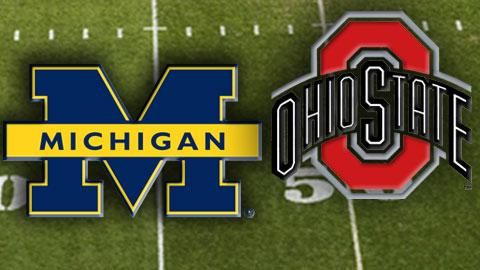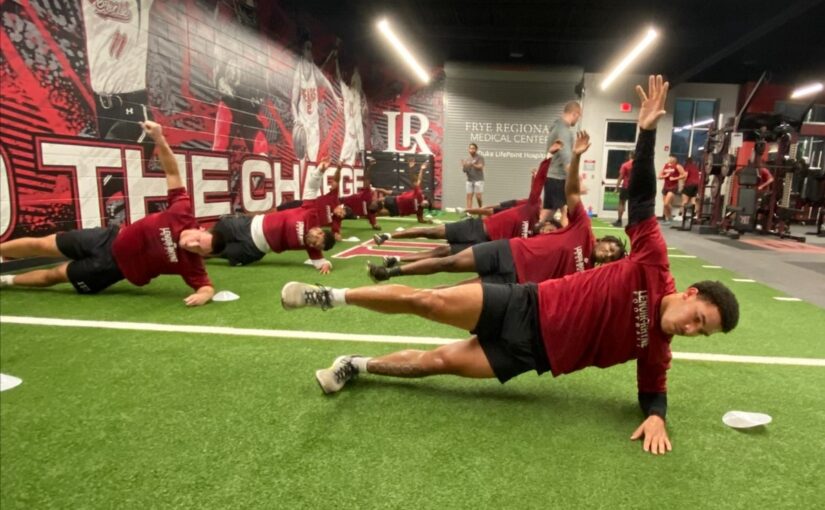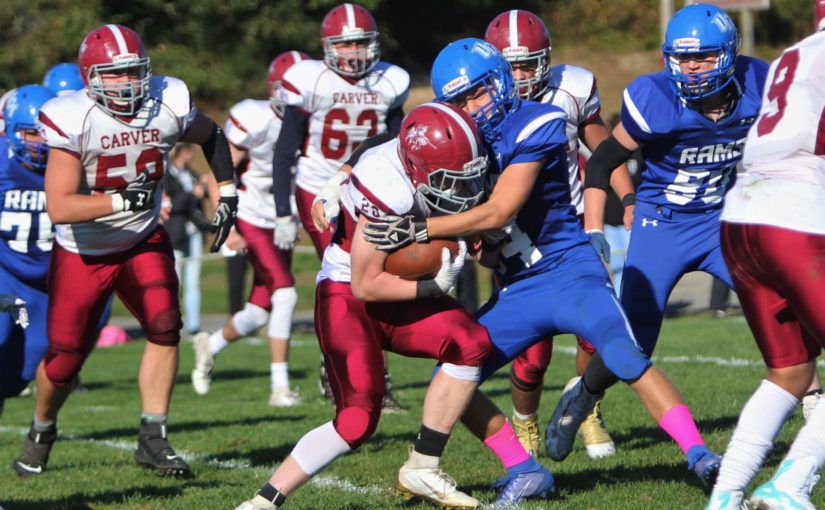Fundraising Amid the COVID-19 Pandemic
In the current climate of the COVID-19 pandemic, fundraising diversification is an important concept for both youth and high-school/interscholastic athletic administrators to acknowledge if they want to have success in both the short and long term.
From an organizational perspective, the logical goal is to have the essential resources to manage multiple streams of income and strike a balance among them. Consequently, prior to the pandemic and for the better part of the last three to four decades among numerous high school athletic programs, fundraising has been conducted as a short-term activity to satisfy a specific need of the program ranging from new uniforms for soccer players to new bats for the softball team to updated equipment for the football team just to name a few. While the specific needs may change over the years, the methods of obtaining the funds have, for the most part, remained the same.
 Episodic fundraisers are activities where the sports organization/program sells products and/or services to generate funds for a specific short-term goal, such as soccer uniforms as indicated above. These approaches, ranging from selling candy bars to washing cars or selling merchant-discount coupon cards are the “traditional way” in which the majority of youth sports organizations as well as many high school athletic departments raise funds for their respective programs. However, these episodic approaches are just one piece of the fundraising puzzle. The key concept to keep in mind is that although episodic fundraisers are a reality and generate money, they should not be the only method or approach in which fundraisers are conducted. We have all heard the idiomatic phrase, “Don’t put all your eggs in one basket.” Moreover, from a financial investment standpoint; just as a retirement portfolio needs to be “diversified” among stocks, bonds, and other assets and securities in the short and long term…so too should the strategies for fundraising among youth and interscholastic athletic programs.
Episodic fundraisers are activities where the sports organization/program sells products and/or services to generate funds for a specific short-term goal, such as soccer uniforms as indicated above. These approaches, ranging from selling candy bars to washing cars or selling merchant-discount coupon cards are the “traditional way” in which the majority of youth sports organizations as well as many high school athletic departments raise funds for their respective programs. However, these episodic approaches are just one piece of the fundraising puzzle. The key concept to keep in mind is that although episodic fundraisers are a reality and generate money, they should not be the only method or approach in which fundraisers are conducted. We have all heard the idiomatic phrase, “Don’t put all your eggs in one basket.” Moreover, from a financial investment standpoint; just as a retirement portfolio needs to be “diversified” among stocks, bonds, and other assets and securities in the short and long term…so too should the strategies for fundraising among youth and interscholastic athletic programs.
Developing long-term strategies are just as important as the immediate need of replacing worn-out uniforms or updating athletic protective gear. These long-term areas that need to be considered by athletic administrators can include, but are not limited to the following:
- Booster Club membership fee arrangements
- Annual giving/Internet-based Crowdfunding opportunities
- Grant Opportunities-(Government, Corporate and Sport-related)
- Corporate Sponsorships/Advertising/Naming Rights Opportunities
- Licensing & Merchandising Opportunities
- Outsourcing Concession Operation Opportunities
- Parking fee arrangements
- Alumni outreach strategies for planned giving opportunities
- Special Events (e.g. Golf outings; Gala Dinners, Raffles, **options are limitless**)
- Hospitality Amenities (e.g. Alumni reunion tailgating spaces; **options are limitless**)
Clearly, the long-term areas listed above will be situationally specific to the type of sport organization in question. Nonetheless, my intent here is to provide athletic administrators an appreciation and understanding of the unique constellation of dynamics and processes that ultimately demonstrate the benefits of diversifying fundraising activities that can satisfy both short- and long-term objectives.
Education-based high school athletic programs are extremely popular here in the United States. Based on the most recent data collected by the National Federation of State High School Associations (NFHS) from their annual Athletics Participation Survey, participation actually declined for the very first time in 30 years and is just shy of 8 million participants.
 Unfortunately, the monies needed to administer these interscholastic athletic programs have not kept pace with the growth of popularity as well as the inevitable demand for program expansion. This reality is compounded when many public school boards, as well as private/parochial school administrations, are slashing the budget allocations toward athletics and extracurricular activities. When schools decide to cut the budget to such an extent that it can only cover a portion of coaching salaries, operational supplies, uniforms/equipment needed for the individual sport, and transportation just to name a few; the following list is just a brief example of what gets sacrificed.
Unfortunately, the monies needed to administer these interscholastic athletic programs have not kept pace with the growth of popularity as well as the inevitable demand for program expansion. This reality is compounded when many public school boards, as well as private/parochial school administrations, are slashing the budget allocations toward athletics and extracurricular activities. When schools decide to cut the budget to such an extent that it can only cover a portion of coaching salaries, operational supplies, uniforms/equipment needed for the individual sport, and transportation just to name a few; the following list is just a brief example of what gets sacrificed.
- Appropriate medical supervision
- Up-to-date athletic equipment and protective gear
- Proper maintenance of athletic fields and facilities
- Liability insurance premiums
- Transportation costs
I could go on and on with this laundry list of what gets sacrificed when inadequate budget allocations from public and/or private/parochial schools are meticulously analyzed. Add to the mix the societal costs (e.g. higher dropout rates, increased teen violence) and while it’s clear this is an alarming trend, many public school boards as well as private/parochial school administrators look the other way or have advised their athletic directors to find alternative funding.
From the financial perspective, once a public source of money, which is typically in the form of taxes, is either scaled back or eliminated entirely, a type of “privatization” will naturally occur as a result. More often than not, the notion of passing on participation fees to parents is a standard practice among many schools and is customarily carried out. While this practice addresses the issue in the short term, ultimately, this is an unsustainable solution in the long run. Furthermore, it disproportionately affects those rural and urban areas that are economically deprived. In fact, the State of California has made it an illegal practice and as such, seeking alternative revenue streams is of utmost importance. With this in mind, corporate sponsorships, private alumni donations, booster club fundraising in addition to leveraging the feasibility of outsourcing licensed merchandise and concessions as an alternative revenue stream should be judiciously examined. From this perspective, fundraising creativity is of paramount importance. Moreover, the aggressive pursuit of alternative revenue streams should be at the forefront of planning athletic seasons as well as the ability to pivot those games/contests amidst the worst pandemic in United States history. As a result, clearly, gate receipts are the lifeblood to interscholastic athletic departments nationwide. However, the COVID-19 pandemic has significantly altered that revenue stream. Thus, fundraising creativity is the operative word in our contemporary environment. For example, Brandon Spaeth, CAA, assistant director of athletics at Roger Bacon High School in Cincinnati leveraged that creativity to his advantage. As a result of a collaboration between Spaeth and student sportscaster Ethan Herzog, they piggybacked on an idea from the NBA’s virtual fans and they ultimately came up with the idea of turning the video-board within the Roger Bacon gymnasium and created a virtual watch party for students and fans.
Holistically, both public and private sources of revenue are needed to sustain education-based athletic programs in both the short and long term. Furthermore, leveraging more private support would certainly aid in addressing and lessening the inverse relationship between athletic participation rates and budget allocations.
David J. Kelley, Ph.D., CAA, is the Assistant Professor-Field Service in the Sports Administration Program at the University of Cincinnati.





